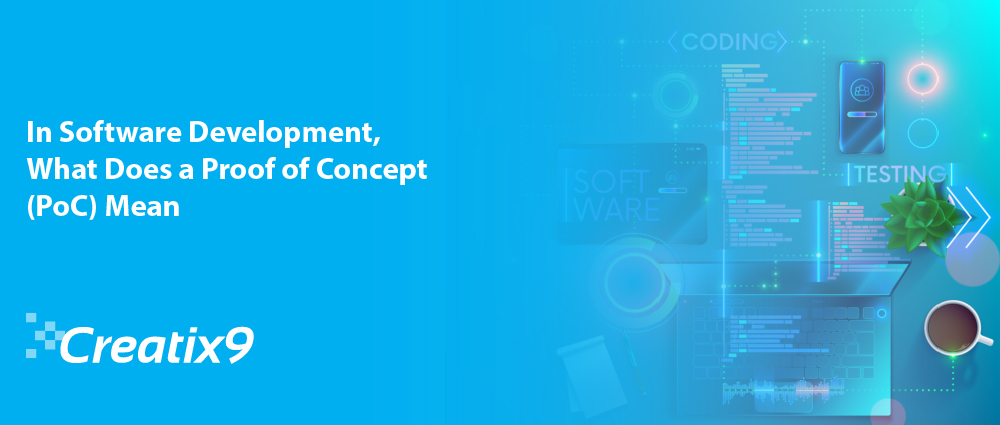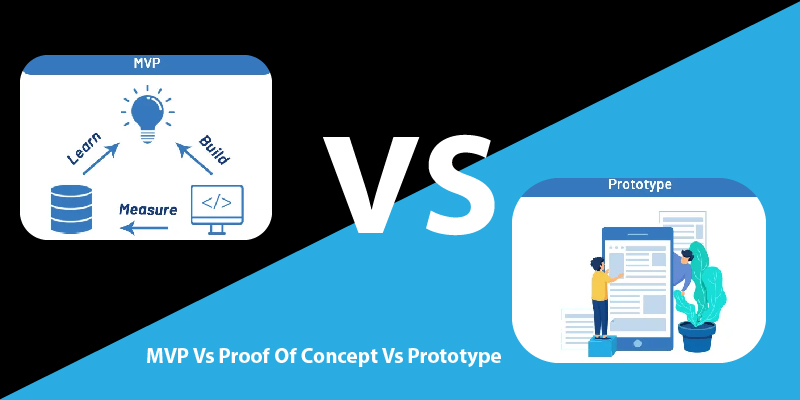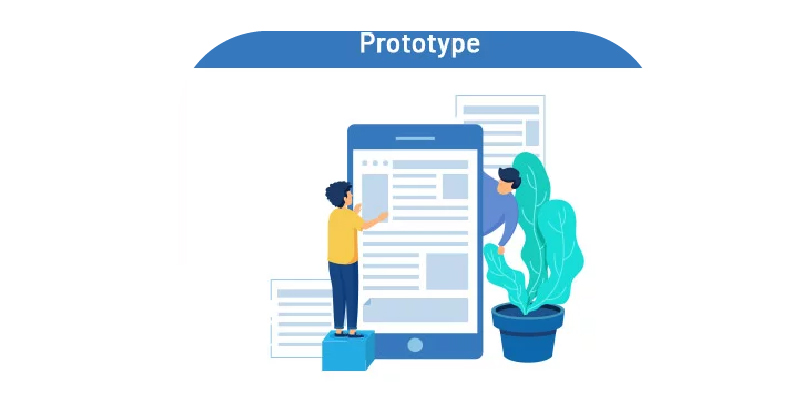
When you have a concept for innovative software, you should get to work on it straight soon. Starting development without first testing the waters is not a wise move in a world of rapidly shifting markets and cutting-edge technologies.
How can you exclude the hazards? Making smart economic and technological decisions requires a number of strategies, but one of the finest practises is to begin development with a proof of concept (PoC).
You will discover what a proof of concept (PoC) is in this blog from the top react native app development and mobile app development software called Creatix9 UK. You will come through how PoC differs from a prototype and a (MVP) minimal viable product, and when and why you need one. So start with the basics.
What Does A Software Development Proof Of Concept Entail?

Making a proof of concept is one way to check your idea before starting to develop new software or upgrade an old one. A PoC seeks to evaluate the technical viability of the solution you intend to construct, unlike other idea validation methodologies in software development. It responds to the straightforward inquiry, “Can your idea actually be implemented?”
Proof of technology, steel thread, and pilot project are the three basic types of proof of concept.
- A proof of technology is a functionality piece that will serve as the foundation for your future application. Developers needs creating essential functionality of the product to get ready this kind of PoC. A proof of technology demonstrates the viability of your chosen technology stack and demonstrates that you can built the planned features using the chosen integrations and libraries.
- A steel thread is a more general idea than just evaluating a product’s technological aspects. As well, it addresses design, monetisation, software architecture, UX copy, and others. You still test whether or not the product will work with a steel thread, but you also take in the context.
- A pilot project is a high-level proof of concept. A pilot project can have a few main features that you can use it for testing with focus groups. Using this type of PoC to build a product is not ideal, but it still works. Its goal is to see if your audience is attentive in this kind of answer and if the set of features can meet the needs of users.
A proof of concept is frequently mistaken with a prototype or MVP since it involves several different components of software development. All of these, though, are distinct ideas with distinct functions. The dissimilarities between a PoC, a prototype, and an MVP needs clarification.
MVP Vs Proof Of Concept Vs Prototype

It is incorrect to frequently use these three terms interchangeably. You’ll likely deal with each of these ideas at various stages of the software product development process if you’re creating your product from start.
PoC
A proof of concept is a component of the project discovery phase, the initial stage of product development where you validate the idea and decide the best strategy to realise it. The purpose of the Proof of Concept (PoC) is to determine the need of the selected technology stack to implement the functionality. If developers encounter constraints, they either look for alternate tools or come to the conclusion that the original idea is not workable.
You can demonstrate a proof of concept as a piece of working functionality or a paper, depending on its type. Stakeholders and, occasionally, funders should approve the proof-of-concept before it is made available to end consumers.
Prototype

A prototype, which is also created during the discovery process, is an early version of your software. An app prototype is a physical depiction of the final software’s design and functionality. It often consists of interactive displays that depict features and illustrate connections between app elements. A prototype makes the app’s future usability, interactivity, and appeal more apparent to stakeholders.
Stakeholders can also display a clickable version to investors during the development phase to raise additional funds. In addition, stakeholders can ask a small group of prospective users—a focus group—to test the prototype and provide comments on what and where changes require.
MVP
A functional application with a basic set of features that satisfy the needs of the target audience is referred to as a minimum viable product (MVP). After the discovery process, a minimum viable product (MVP) for a startup is made. This includes both front-end and back-end development as well as activities to make sure the product is good.
When Could It Be Necessary To Begin With A Proof Of Concept (PoC)?

A proof of concept should be the first step in any new initiative. However, a PoC can also be helpful if you need to make changes to an already-running firm. Do you now see the value of a proof of concept in either situation?
The Proof Of Concept (Poc), The Development Of A New Business
Making sure you can actually develop your idea technically requires starting with a proof of concept.
A client of ours who runs a data backup platform approached us with the concept of creating a backup app that would work with many services. We began the project by creating a proof of concept to ensure we could construct the app in accordance with the client’s specifications. We created a feature that could download and backup data from GitHub. We continued to build the concept based on the PoC after confirming its viability.
Contact the top digital services provider called Creatix9 UK to start you project with PoC. We build the best software’s, website ad mobile apps. Out developers have a deep understanding in the react native app development and mobile app development software? So approach us with just few clicks.
Demonstrating The Feasibility Of Expanding An Existing Business
A PoC will also be helpful if your application is currently functional and you want to scale it or improve it. Along with the constraints of the development tools you’ve chosen, you could also run into software limitations.
Before launching a blockchain-based food traceability system and integrating it into their current software, Walmart, for instance, finished two proof-of-concept initiatives. Walmart was able to cut the time for product traceability thanks to the PoC from 7 days to 2.2 seconds. They were able to easily trace up to 25 products once they satisfied that they could integrate this functionality into their system. These days, Walmart is known all over the world as a company that sells safe food.
Five Advantages For Your Startup Of Developing A Proof Of Concept (PoC)

While some business owners might choose to forgo the idea validation step and begin development more quickly, examples of well-known organisations demonstrate that a PoC has several advantages for the company.
1. Save time and resources
Building a complete product before determining its viability, much alone technical feasibility, can result in higher costs than anticipated at the start of development. It would be unfortunate to spend tens of thousands of dollars on recruiting, training, and beginning development only to learn that your concept is too new for implementation using the development tools now in use. With a proof of concept, you can go to the next stage without taking a significant financial and time risk.
2. Pick The Appropriate Tech Stack
You already know that the primary goal of a PoC is to demonstrate your technical ability to realise your idea. You can also verify your technology stack. The development team will now specify the toolset that will best serve your present needs and upcoming goals.
3. Risk Evaluation For Technology
You can identify technological risks early on in the development process as you construct a proof of concept throughout the early phases of startup development. Together, a software architect and a quality assurance engineer can identify typical bottlenecks in a given technology and suggest solutions.
4. Boost The Trust Of Stakeholders
Regardless of how fantastic your startup idea can be, failure is still a possibility. One of the leading causes of startup failure is skipping the discovery phase. Your risk of developing the incorrect product is reduced by commencing work on your application. You can develop a PoC and get early input from focus groups. A good incentive to continue working on the project is the fact that one of the first deliverables is complete and about to be released.
5. Encourage Investors To Support Your Startup
You need to persuade potential investors that your MVP is worth funding in order to recruit them. Investors don’t, however, choose to fund a company based just on verbal promises. With a PoC in hand, you can pitch investors on your plan for carrying out your idea and persuade them to provide funding.
6. Possess A Foundation For Future Development
A proof of concept can develop into a working product, although this isn’t always the case. Therefore, you can apply the resources you devote to the PoC stage to the creation of the MVP.
Conclusion
Building a proof of concept before beginning product development is one of the greatest software development approaches. After demonstrating that your concept is technically feasible, you can move forward with developing your product and potentially attracting investors early in the process.
You wish to have to start your software or app development project from scratch, make a solid connection with the greatest digital services provider and build the best react native app development or a mobile app development software for your business.

